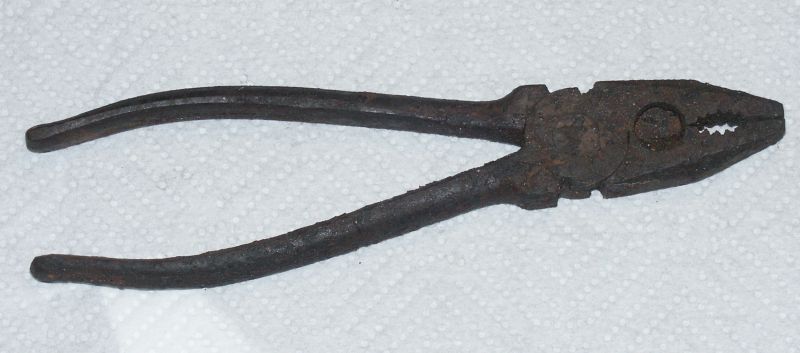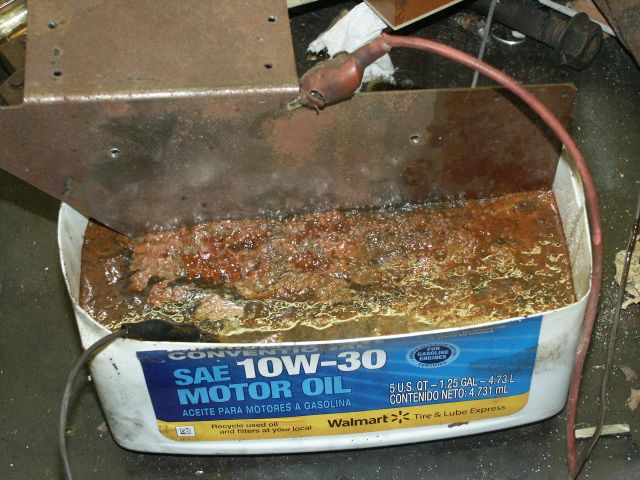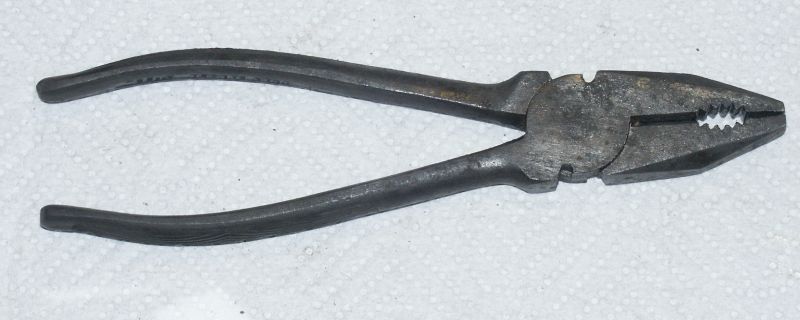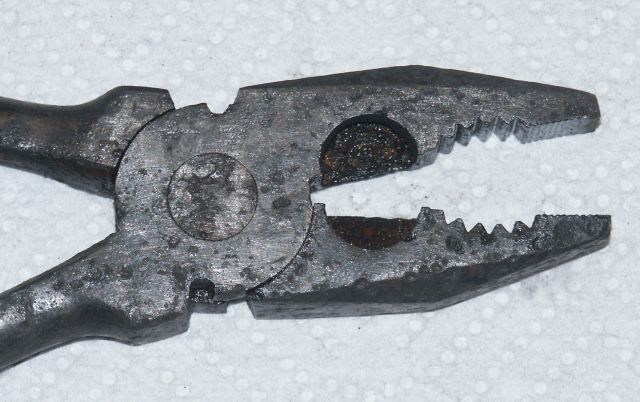| Scott's Atlas / Craftsman 101.07403 12x36" Lathe, modifications and projects. Stone Mountain, GA | Unique Visitors: |
I had read about this and decided to try it.
Notes:
You will need washing soda, steel sacrificial electrodes, water and a plastic tub of some sort. A 12V power supply of 5A or more will be needed. A battery charger is most often used.
It gives off oxygen and hydrogen, so beaware of flammable fumes.
Using a stainless steel electrode will put chrominum in the water, not real good to be exposed to.
 |
I was working on a crappy mower and this fell out of it: Was tempted to throw it out but had just read about using electrolysis to remove rust. Hardest part was finding Washing Soda. Did find it at Ingles
where the bleach and spot removers were. |
 |
Scrap sheet metal as an electrode and wrapped some wire around the pliers. You dissolve about 1-2 tablespoons of washing soda per gallon, the more you use the faster it works. Electrode is positive, piece to remove rust is negative. I used a 12V power supply, most use battery chargers. Hooked it up and got about 5 amps. That surprised me how much current there was. Picture was after 20 minutes and the current had gone up to 7 amps. Lots of fizzing ;) You want it to fizz continuously. The electrode will get slimey and need to be cleaned of rust after a while. For big things, people use rebar. Left for about an hour. Then removed, washed and cleaned with wire brush. Was surprised how warm the water was. |
 |
Not bad, I had heard it blackens things, but it was
already black. You need to oil or paint right away as it will
rust again. |
 |
There is definite pitting (from rust, not the removal). Using a wire brush alone would probably not get into the pits. It is supposed to work well on paint too. Hard part is getting power. A car battery charger will work as will a car battery. You will need a few amps. Overall worked well. Much easier than spending hours with
wire brush in a drill. |